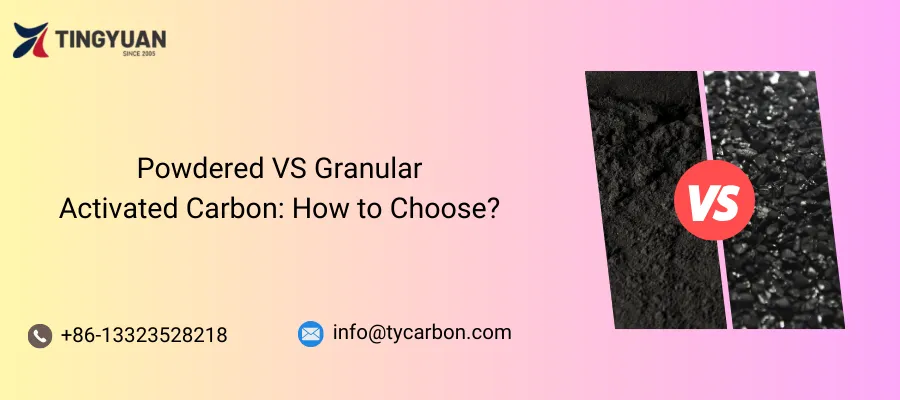Activated carbon is a porous carbon material with an extremely high specific surface area and strong adsorption capacity. It plays an important role in environmental protection, industrial production, and daily life.
As an efficient adsorbent, activated carbon is widely used in water treatment, air purification, food processing, and other fields. Among the many activated carbon products, powdered activated carbon (PAC) and granular activated carbon (GAC) are the two most common forms.
This article will provide an in-depth comparison and analysis of these two types of activated carbon, exploring their differences to help you make a more informed choice.
What is Powdered Activated Carbon?
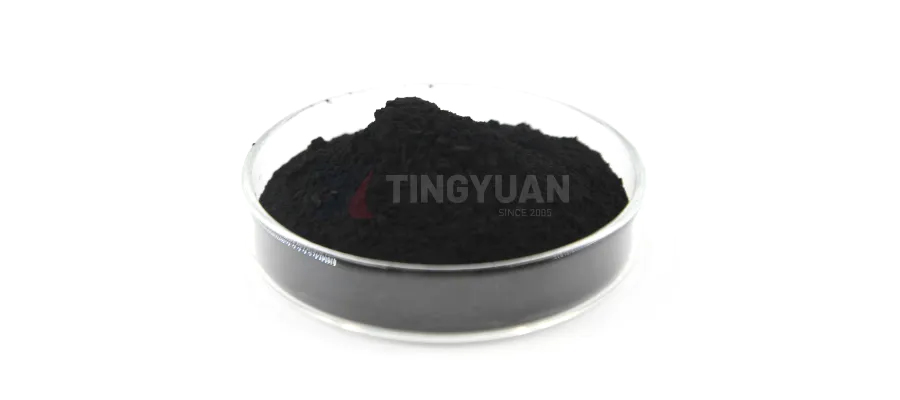
Powdered activated carbon is a fine powder with particle sizes less than 0.18mm, usually appearing as a black powder. PAC has a larger external surface area, allowing it to provide a faster adsorption rate in a short period.
However, due to its fine particles, PAC easily forms suspensions during use, requiring additional separation steps.
Production Methods
The production methods of PAC are mainly divided into physical and chemical methods. The physical method uses high-quality fruit shells or sawdust, which are refined and ground after steam activation to obtain activated carbon with a large specific surface area and adsorption capacity.
The chemical method involves screening and drying sawdust, mixing it with chemical activators (such as zinc chloride), and then carbonizing and activating it in an activation furnace. After washing, dehydrating, drying, and grinding, the final powdered activated carbon product is obtained.
Raw Materials and Common Sizes
Powder activated carbon is a porous, high surface area carbon material usually made from organic materials such as wood, coconut shells, or coal. These raw materials undergo a specific activation process to form numerous pores and fissures within the carbon structure, giving the activated carbon strong adsorption capabilities.
The common sizes of PAC are usually expressed in mesh numbers, which refer to the particle size or fineness of the material. The mesh number is defined as the number of openings per square inch of a screen through which the material can pass.
The larger the mesh number, the smaller the particles. Depending on the application, different mesh sizes are selected. The commonly used mesh sizes are 100, 200, and 325. For example, in wastewater treatment, we usually use 200 mesh activated carbon.
Main Application Areas
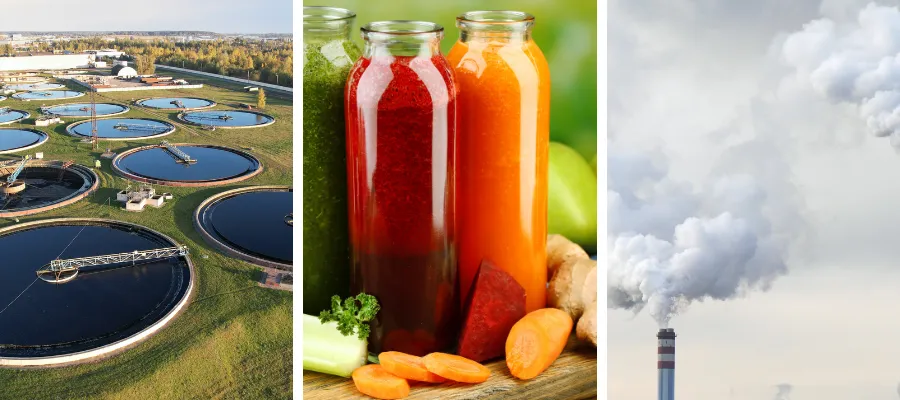
Due to its high specific surface area, powdered carbon has a very strong adsorption capacity. PAC can quickly adsorb organic pollutants, pigments, odors, and more in water, making it widely used in various fields:
- Water Treatment: Used for emergency treatment or municipal water treatment
- Wastewater Treatment: Used to remove refractory organics and heavy metals
- Food Industry: Used for decolorization and purification of liquid foods
- Pharmaceutical Industry: Used for drug refining and pigment removal
- Incineration Flue Gas Treatment: Effectively adsorbs and removes harmful substances such as sulfur, dioxins, and mercury in flue gas
- Soil Improvement: Used to improve soil properties and reduce the content of heavy metals and organics in soil
What is Granular Activated Carbon?
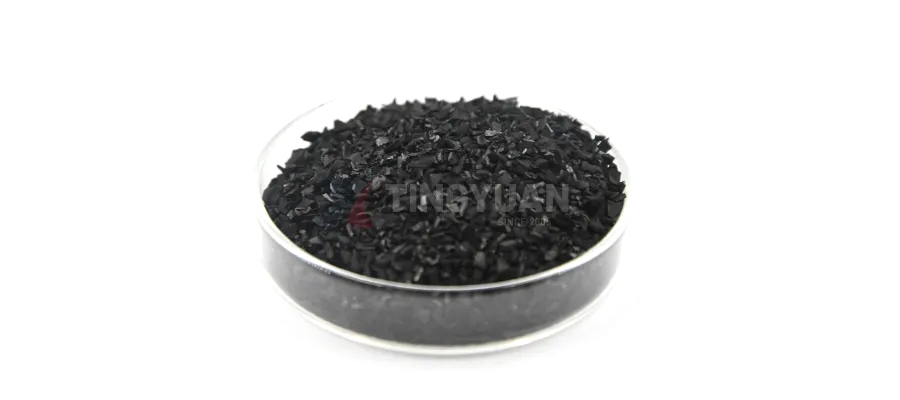
Granular activated carbon usually appears in irregular granules with particle sizes typically ranging from 0.2 to 5mm. Granule activated carbon has a hard surface and a complex internal pore structure, which allows it to maintain good mechanical strength and stability during use.
Due to its larger particle size, GAC has a lower pressure drop and is suitable for use in fixed bed or moving bed systems.
Production Methods
The production of granulated activated carbon typically involves physical and chemical activation methods. The physical activation process includes two stages: raw material carbonization and high-temperature activation.
First, the raw material (such as coal, wood, coconut shells, etc.) is heated in an oxygen-free environment to 500-800°C for carbonization.
Then, at a high temperature of 700-1100°C, activators such as steam, carbon dioxide, or air are introduced for activation.
Chemical activation involves mixing the raw material with activators (such as zinc chloride, phosphoric acid, etc.) and directly activating it at a lower temperature (400-700°C).
Raw Materials and Common Sizes
Granule activated carbon can be made from various carbonaceous materials. The choice of material greatly influences the performance and effectiveness of the activated carbon, making it essential to understand the different materials.
Granular active carbon is primarily made from coal, coconut shells, and fruit shells. Coal-based materials include bituminous coal, anthracite, and lignite, while fruit shell materials mainly include walnut shells and apricot shells.
The common sizes of GAC are usually expressed in mesh numbers. Common sizes include 4-8 mesh, 8-16 mesh, 8-30 mesh, 4-6 mesh, 12-30 mesh, and 12-40 mesh. Different applications require different sizes of activated carbon. For example, in gold extraction, we typically use 6-12 mesh activated carbon.
Main Application Areas
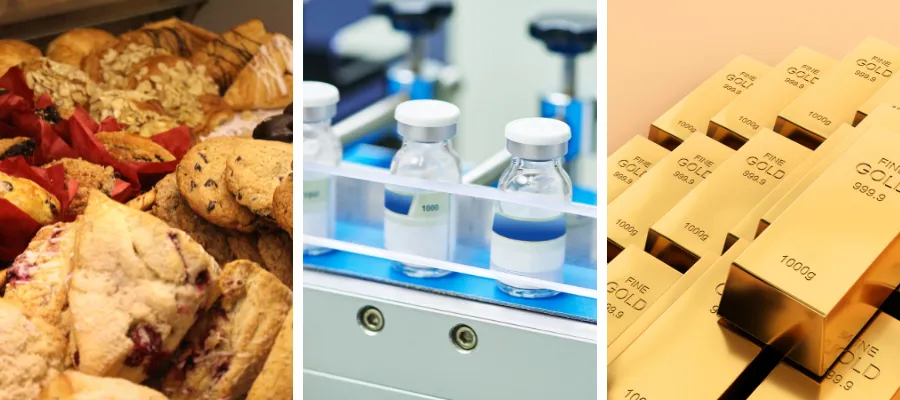
Granulated activated carbon is widely used in various fields, playing an important role in many industries to improve quality of life, protect the environment, and promote health:
- Water Treatment: Used to remove organic pollutants, odors, and pigments from water
- Air Purification: Used to adsorb harmful substances from industrial waste gas and indoor air
- Food Processing: Used for decolorization, deodorization, and purification
- Pharmaceutical Industry: Used for drug purification and toxin adsorption
- Metal Recovery: Used for the recovery and purification of precious metals
- Catalytic Applications: Used as a catalyst or catalyst carrier, widely applied in chemical reactions
Main Differences Between PAC and GAC
Among various types of activated carbon, PAC and GAC are often compared. Although both have high adsorption performance, they still have significant differences. Here, we will conduct a detailed comparative analysis of these two types of activated carbon from the following aspects:
Particle Size and Surface Area
Granular active carbon has a larger particle size (0.2-5mm), while PAC has a particle size of less than 0.18mm. This difference means that PAC has a larger external surface area, providing a faster adsorption rate in a short time. However, GAC’s internal pore structure is more developed, and the total surface area may be comparable to or higher than that of PAC.
Adsorption Capacity
In the short term, PAC usually exhibits stronger adsorption capacity due to its larger external surface area and faster diffusion rate. However, in long-term use, GAC may have a higher adsorption capacity because its internal pore structure can continuously adsorb pollutants.
Regeneration Capability
A significant advantage of GAC is its excellent regeneration capability. Through thermal, chemical, or biological regeneration methods, GAC can be reused multiple times, greatly extending its service life. In contrast, PAC is usually single-use, with the regeneration process being complex and uneconomical.
Service Life
Thanks to its regeneration capability and better mechanical strength, granular active carbon generally has a much longer service life than PAC. In fixed bed systems, GAC can be used continuously for months or even years, while PAC is typically used for only a few hours to days.
Cost Factors
In terms of initial investment, PAC usually costs less than GAC. However, considering GAC’s regeneration capability and long service life, granular active carbon may be more cost-effective in the long run. The specific cost advantage depends on the application scenario and treatment requirements.
Comparison of GAC & PAC Application Field
Powdered active carbon and granular active carbon each have their advantages and demonstrate unique applications and suitable scenarios. Below, I will compare them in terms of water treatment, air purification, and industrial processes.
Water Treatment
In the field of water treatment, both GAC and PAC have unique application advantages. GAC is typically used for continuous water quality improvement, such as deep treatment of municipal water supply systems or purification of industrial water. It can effectively remove organic pollutants, odors, and disinfection byproducts from water.
PAC is more suitable for addressing sudden water quality issues or seasonal pollution, such as odor problems caused by algal blooms. PAC can be quickly added and provide efficient treatment in a short time.
Air Purification
In air purification, granule activated carbon is more commonly used. It can be packed into air filters to remove VOCs (volatile organic compounds) and odors from industrial waste gas and indoor air. GAC filters can be used for a long time, requiring only periodic replacement or regeneration.
PAC has relatively limited applications in air purification, mainly used in some special powder injection systems.
Industrial Processes
In industrial processes, the choice between GAC and PAC depends on the specific application. For example, in the food processing industry, granulated activated carbon is commonly used in fixed bed systems for continuous decolorization and purification of liquid foods.
Powder activated carbon is more used in batch processes, such as rapid decolorization of syrups. In the pharmaceutical industry, GAC can be used for continuous drug purification processes, while PAC can be used for the rapid removal of specific impurities.
Conclusion
Powdered activated carbon and granular activated carbon, as two main forms of activated carbon, each have their own characteristics and application advantages.
PAC, with its rapid adsorption and flexible addition, plays an important role in emergency treatment and specific industrial processes. GAC, with its regenerability, long service life, and suitability for continuous treatment systems, occupies an important position in water treatment, air purification, and other fields.
Choosing whether to use powdered carbon or granulated carbon requires comprehensive consideration of application needs, treatment goals, cost-effectiveness, and system requirements.
As an activated carbon supplier, whether you choose powdered activated carbon or granular activated carbon, Tingyuan Activated Carbon Company can provide high-quality products and professional technical support to help you solve various purification and adsorption needs. Feel free to contact us at any time!
Whatsapp: +86-13323528218
Email: info@tycarbon.com

